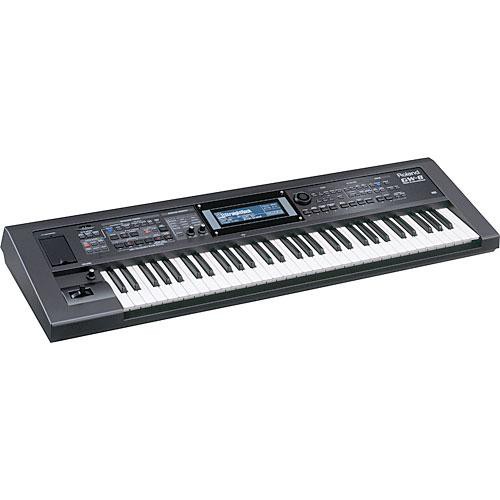
Roland Gw 8 Styles Free Download
The new, free Version 2 GW-8 operating system software is a big update for the GW-8, adding lots of new features. With Version 2, the GW-8 is even more fun to use, and downright powerful as a style-making workstation. New Roland E-600 styles for download Some great new styles for your Roland E-600. Check them out by downloading them for free! Blues Boogie Disco Dixi Foxtrot Ballad Classic 8Beat 16Beat Slowrock Slowbeat Rap Styles11 Styles12 The E-600 is the latest addition to Roland’s popular E-Series of home-oriented keyboards.
• This document explains the functions that have been added in version 2.0. Please read this along with the GW-8 Owner’s Manual. Copyright © 2009 ROLAND CORPORATION All rights reserved. No part of this publication may be reproduced in any form without the written permission of ROLAND CORPORATION. • Contents New Functions in GW-8 Version 2.0. 3 Creating a Song.23 Creating a User Style.3 Recording Your Performance as You Play. 23 Recording or Editing a Song.3 Ways to Create a Song.24 Other Added Functions.3 Editing an Existing Song.
• New Functions in GW-8 Version 2.0 Creating a User Style • You can easily create a new Style by accessing the STYLE MAKEUP screen for an existing style, then changing the sounds or modifying the way the sounds are produced. • Before You Compose a Style How a Style is Constructed Checking the Settings for Each Part of a Division For each of the three principal chords (Major, minor, and 7th), each Style contains four variations each for intro, main, fill-in, In the STYLE COMPOSER screen, press [ENTER] to access the and ending, giving a total of 48 accompaniment patterns. • Before You Compose a Style Creating a User Style Broadly speaking, you can create a user style in either of the following two ways. Editing an existing style You can create a new User Style by changing the Tones used in a previously saved Style, adjusting the volume balance between parts, or adjusting the settings of dedicated Style effects. • Editing an Existing Style Changing the Style’s Sounds Changing the Style’s MFX (STYLE MAKEUP) Settings (STYLE MFX) You can change the Tone used by each part of a Style, and Here’s how to change the effect settings or the amount of adjust the volume and effect balance between parts.
• Editing an Existing Style STYLE MFX SETTING screen Button Explanation From the STYLE MFX screen, press [ ] to access this screen. Selects the type of character. Each time you press this, you will alternately select the first [0] (TYPE) character of a character set: uppercase (A), lowercase (a), or numerals and symbols (0). • Creating a New Style Initializing the Style Recording a Style (STYLE INITIALIZE) You can use either of two recording methods: realtime recording or step recording. Select the method that’s suitable Here’s how to delete the performance data from the Style, and for your situation. • Creating a New Style Parameter Value Explanation Step Recording New material is recorded as REPLACE previously recorded material 1. If you want to create a new Style from scratch, initialize is erased.
Rec Mode (p.8) the Style and then proceed to step 4. New notes are recorded on If you want to record using an existing Style, select the top of notes previously. • Creating a New Style Parameter Value Explanation Parameter Value Explanation New material is recorded as Specifies the volume of the REPLACE previously recorded material note to be input.
 Select “REAL” if you want the Rec Mode velocity to reflect the force New notes are recorded on REAL, with which you play the key. • Creating a New Style Saving the Style You Recorded The Relation between Note Value Length and Gate Time A Style you’ve recorded can be saved as a User Style. The relation between the length of the note value and the The following content is saved. • Creating a New Style The STYLE COMPOSER ZOOM screen will appear.
Select “REAL” if you want the Rec Mode velocity to reflect the force New notes are recorded on REAL, with which you play the key. • Creating a New Style Saving the Style You Recorded The Relation between Note Value Length and Gate Time A Style you’ve recorded can be saved as a User Style. The relation between the length of the note value and the The following content is saved. • Creating a New Style The STYLE COMPOSER ZOOM screen will appear.
The GW-8 is able to display both uppercase and lowercase letters, but these are not distinguished internally. For example, suppose that a Style named “ROCK” has been saved. If you then record a different Style, assign it the name “rock”. • Creating a New Style Parameter Value Explanation Correcting the Note Timing (Quantize) C– (Note Note Specifies the lowest pitch Range Max This function corrects the timing of the performance data in the Range Min to be quantized. Value) specified region. (Note Range Specifies the highest pitch Note. • Creating a New Style Parameter Value Explanation Parameter Value Explanation ALL, NOTE, From Specifies the beginning of MODULATION, (MEAS: 0001: 01: 000– the region to be deleted.
BEAT: TICK) PANPOT, Specifies the type of data Data Type EXPRESSION, to be erased. Specifies the end of the To (MEAS: REVERB. • Creating a New Style Parameter Value Explanation Parameter Value Explanation Specifies the beginning Selects the division. Of the region to be If the SOURCE setting copied. DIVISION is set to From INT1–4, (MEAS: 0001: 01: 000– If you’ve selected ALL as “xxxALL,”. • Creating a New Style Inserting Blank Space (Insert) Shifting the Pitch (Transpose) This function inserts blank space at the specified location. This function transposes the pitches of the specified region.